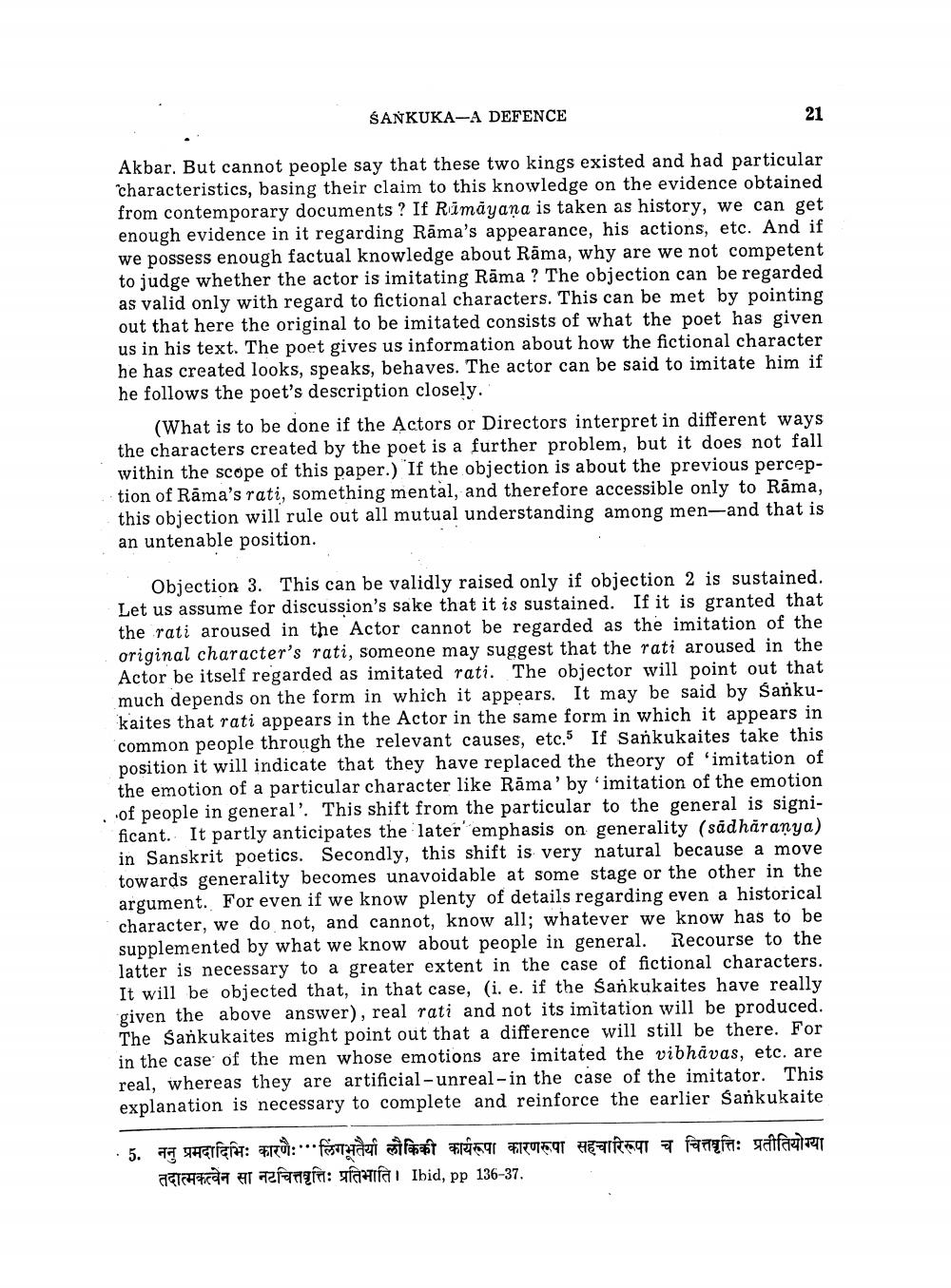________________
ŚANKUKA-A DEFENCE
Akbar. But cannot people say that these two kings existed and had particular characteristics, basing their claim to this knowledge on the evidence obtained from contemporary documents ? If Rimāyana is taken as history, we can get enough evidence in it regarding Rāma's appearance, his actions, etc. And if we possess enough factual knowledge about Rāma, why are we not competent to judge whether the actor is imitating Rāma ? The objection can be regarded as valid only with regard to fictional characters. This can be met by pointing out that here the original to be imitated consists of what the poet has given us in his text. The poet gives us information about how the fictional character he has created looks, speaks, behaves. The actor can be said to imitate him if he follows the poet's description closely.
(What is to be done if the Actors or Directors interpret in different ways the characters created by the poet is a further problem, but it does not fall within the scope of this paper.) If the objection is about the previous perception of Rāma's rati, something mental, and therefore accessible only to Rāma, this objection will rule out all mutual understanding among men-and that is an untenable position.
riginal character’sced as imitated rati. Thes. It may be said
they haveauses, etc som in which
Objection 3. This can be validly raised only if objection 2 is sustained. Let us assume for discussion's sake that it is sustained. If it is granted that the rati aroused in the Actor cannot be regarded as the imitation of the original character's rati, someone may suggest that the rati aroused in the Actor be itself regarded as imitated rati. The objector will point out that much depends on the form in which it appears. It may be said by Sankukaites that rati appears in the Actor in the same form in which it appears in common people through the relevant causes, etc. If Sankukaites take this position it will indicate that they have replaced the theory of 'imitation of the emotion of a particular character like Rāma' by 'imitation of the emotion of people in general'. This shift from the particular to the general is significant. It partly anticipates the later emphasis on generality (sadharanya) in Sanskrit poetics. Secondly, this shift is very natural because a move towards generality becomes unavoidable at some stage or the other in the argument. For even if we know plenty of details regarding even a historical character, we do not, and cannot, know all; whatever we know has to be supplemented by what we know about people in general. Recourse to the latter is necessary to a greater extent in the case of fictional characters. It will be objected that, in that case, (i. e. if the Sankukaites have really given the above answer), real rati and not its imitation will be produced. The Sankukaites might point out that a difference will still be there. For in the case of the men whose emotions are imitated the vibhāvas, etc. are real, whereas they are artificial - unreal - in the case of the imitator. This explanation is necessary to complete and reinforce the earlier Sankukaite
.5. ननु प्रमदादिभिः कारणैः "लिंगभर्या लौकिकी कार्यरूपा कारणरूपा सहचारिरूपा च चित्तवृत्तिः प्रतीतियोग्या
a hrana zarafa: ufahifa i Ibid, pp 136-37,




